The entire island of Delos is an archaeological site, and UNESCO world heritage listed. According to Greek mythology, this island was the birthplace of the god Apollo and his twin sister Artemis. The island was considered as most sacred and its central location made it a wealthy commercial port, attracting the settlement of rich merchants, bankers, artisans, and ship owners.
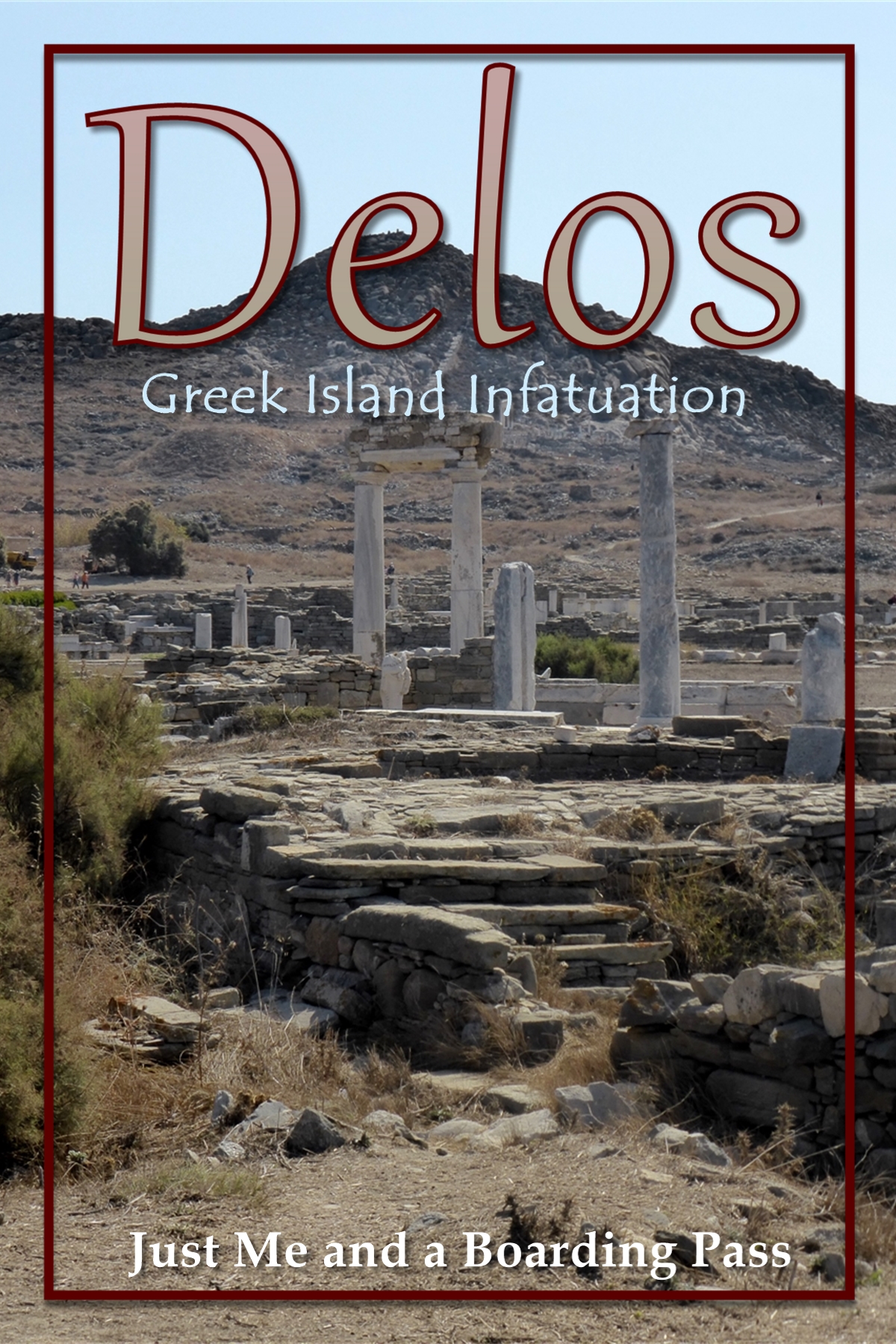
Sadly, the island was the victim of attacks and looting that led to the abandonment of the settlement in the first century BC. Captured by successive nations after its abandonment, Delos was turned into a quarry site and its wealthy houses left in ruins. It has remained uninhabited since its abandonment, and no village or town was ever built over the ancient ruins, so the site has remained unchanged since that time. Excavations commenced in the early 1870’s and have uncovered monuments, houses, temples and many public buildings. There are a couple of new buildings such as the museum where the uncovered artefacts are displayed, and caretakers housing.
Visit Delos
Visits to the island are only available by day trips from the nearby islands. I took a day trip from Naxos that took me to Delos for three hours, and then on to Mykonos for a few more. I was really excited to visit Delos, and see an entire island that was an ancient ruined city! Admission to the site is allowed after you purchase your entry ticket. There are several tour guides available, and selling their tours to the people waiting in the line. Sometimes I take the tour around ancient sites, because it is interesting to hear about the history of a place, and it brings the scene before you to life. But for this trip, I was just keen to get away from the throng of the crowds and explore the city on my own. I had downloaded a map of the site from Google and headed off in the opposite direction of the crowds to see what I could explore in my allotted 3 hours. (I’m not going to break any copyright laws by reproducing that map in this post, but if you want to do what I did, I suggest you search for “map of ancient Delos”)

The site is interesting because you can walk around the streets and look into the houses, literally, as there are no intact roofs, and only parts of the walls remain. Enough that you can see the division of the rooms and courtyards, and the size of them, as you walk past the building. I was captivated by the mosaic tiled floors, that were so incredibly ancient, and yet still there for me to observe in my century. It never gets old for me. (Pun intended) I didn’t have time to see everything, and what I did get to see was at a fast pace. I didn’t want to miss my boat! So I would suggest that if you are planning to climb the mountain, you could do with more than just three hours on site.
Some interesting attractions in the ancient city of Delos
The Delos Theatre
Built in the 3rd century BC, the attendees in the high seats had a magnificent view over the harbour!
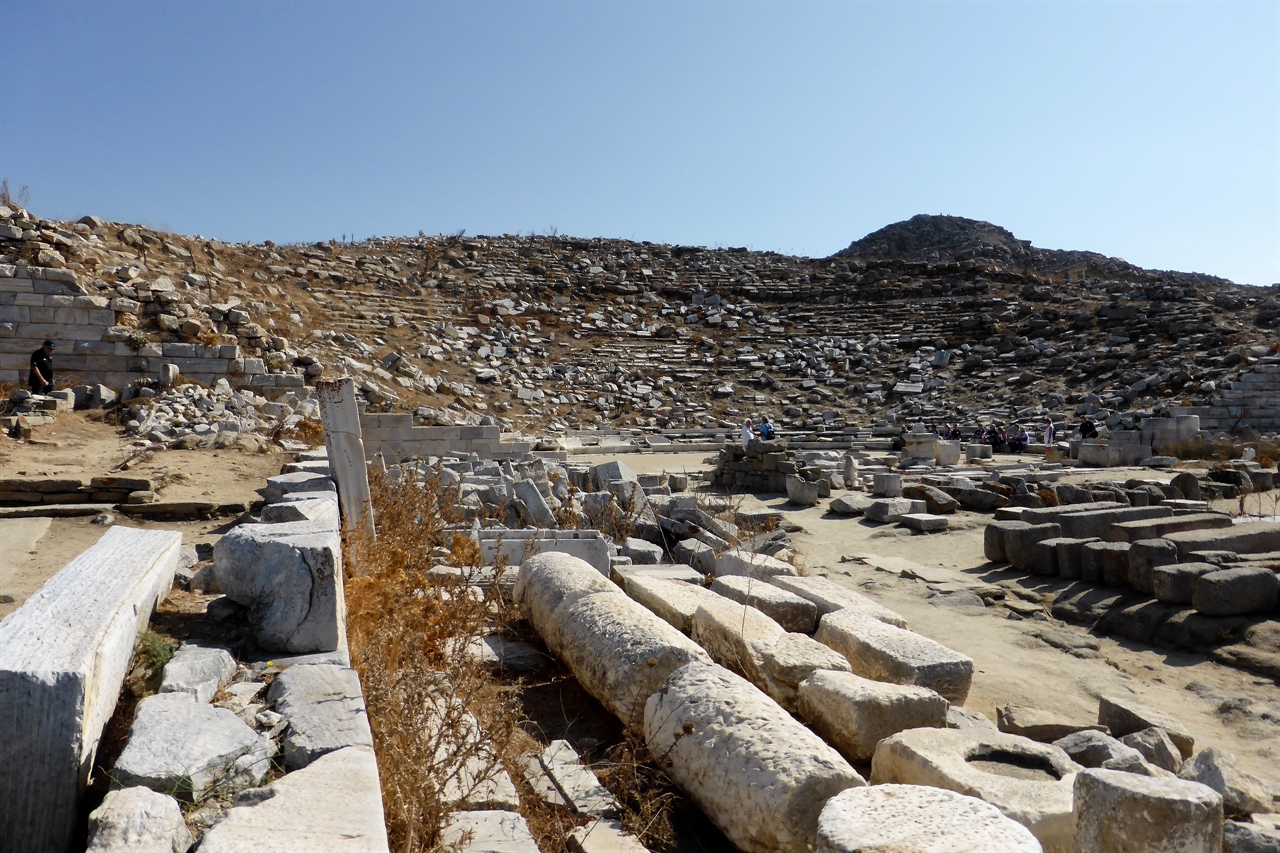
The Theatre Cistern
Built to collect rainwater. It used to have a roof supported by those arches.
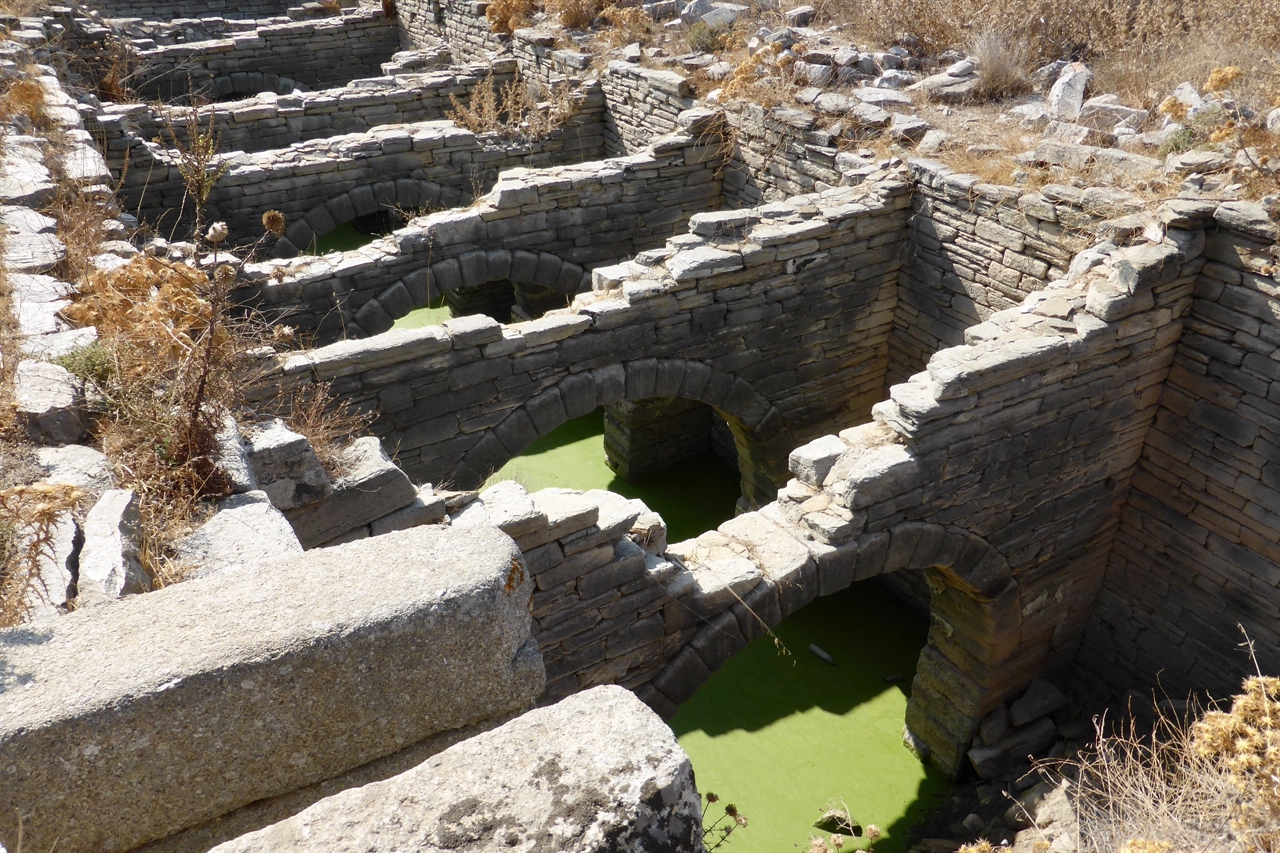
Mount Kynthos
There are stairs that lead up the side of the mountain to the summit, where there are the remains of a sanctuary. The climb to the top is quite steep, but the view from the top is absolute magic. You can see in every direction for miles, and the other islands are just a little way off. It is also incredibly windy up there at the top!



The Sacred Lake
The lake was drained to prevent the spread of diseases such as malaria. What is left is the palm tree, which is said to be the birthplace of Apollo and Artemis, in the middle of the sacred lake basin. The lake is now an area of greenery, in stark contrast to the desolate brown dirt and spindly shrubs that cling to their existence around the island.
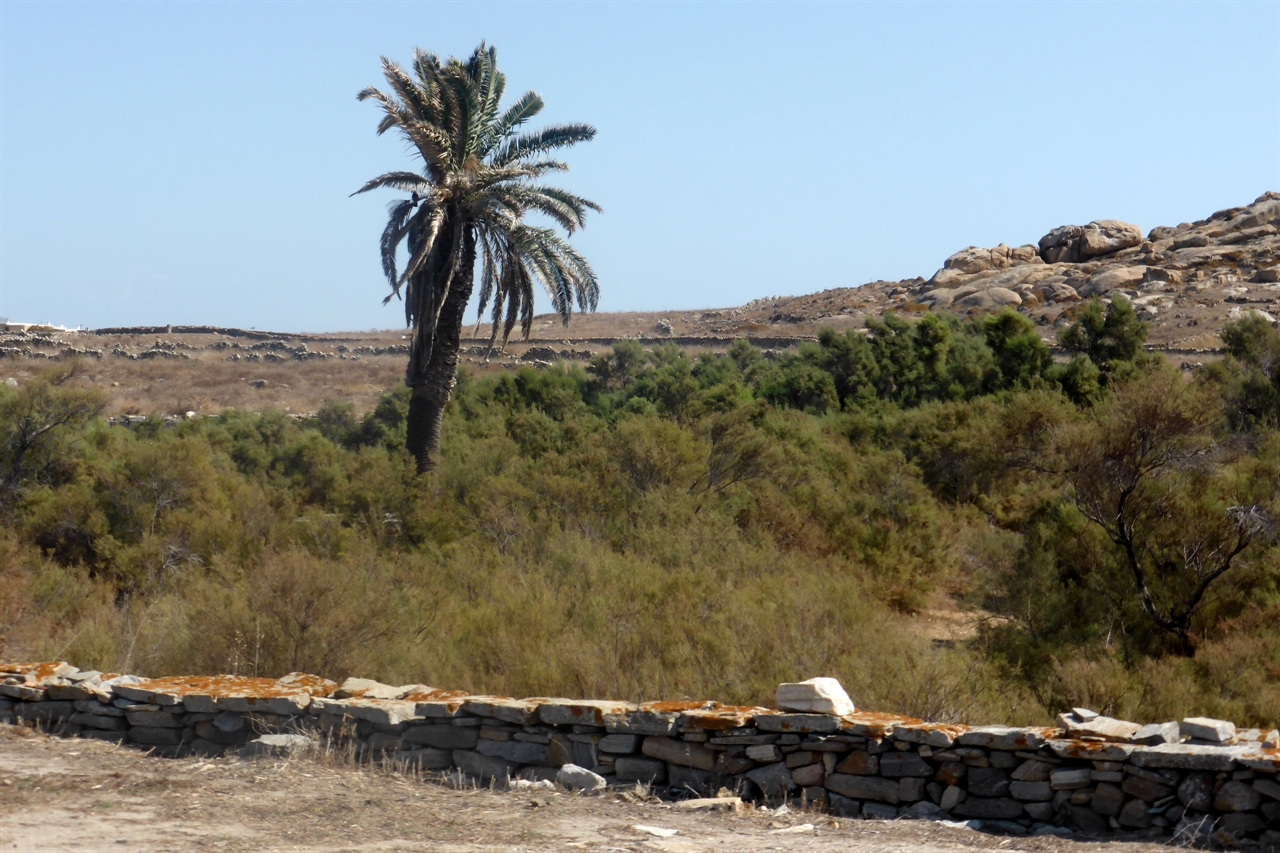
The Terrace of the Lions
The statues of the lions stood as guardians over the sacred lake. These lions were a gift to the god Apollo from the people of Naxos and made of the famous Naxian marble. The original lions have been moved to the archaeological museum and replaced with replicas.


Archaeological Museum of Delos
This museum is packed with smaller artefacts that have been found during the excavation of ancient Delos. Tools, pottery, jewellery, statues (including the Lions) and small decorative frescos that have been recovered from the walls can be found in the museum. The only toilets to be found on the island are also in this building. So if curiosity about history doesn’t draw you there, practicality will.
The Residential Houses
There are many houses with various names that you will see as you wander around the streets of the ancient city. Many of them have beautiful mosaic floors still intact.




Temples
There are several temples built around the island.
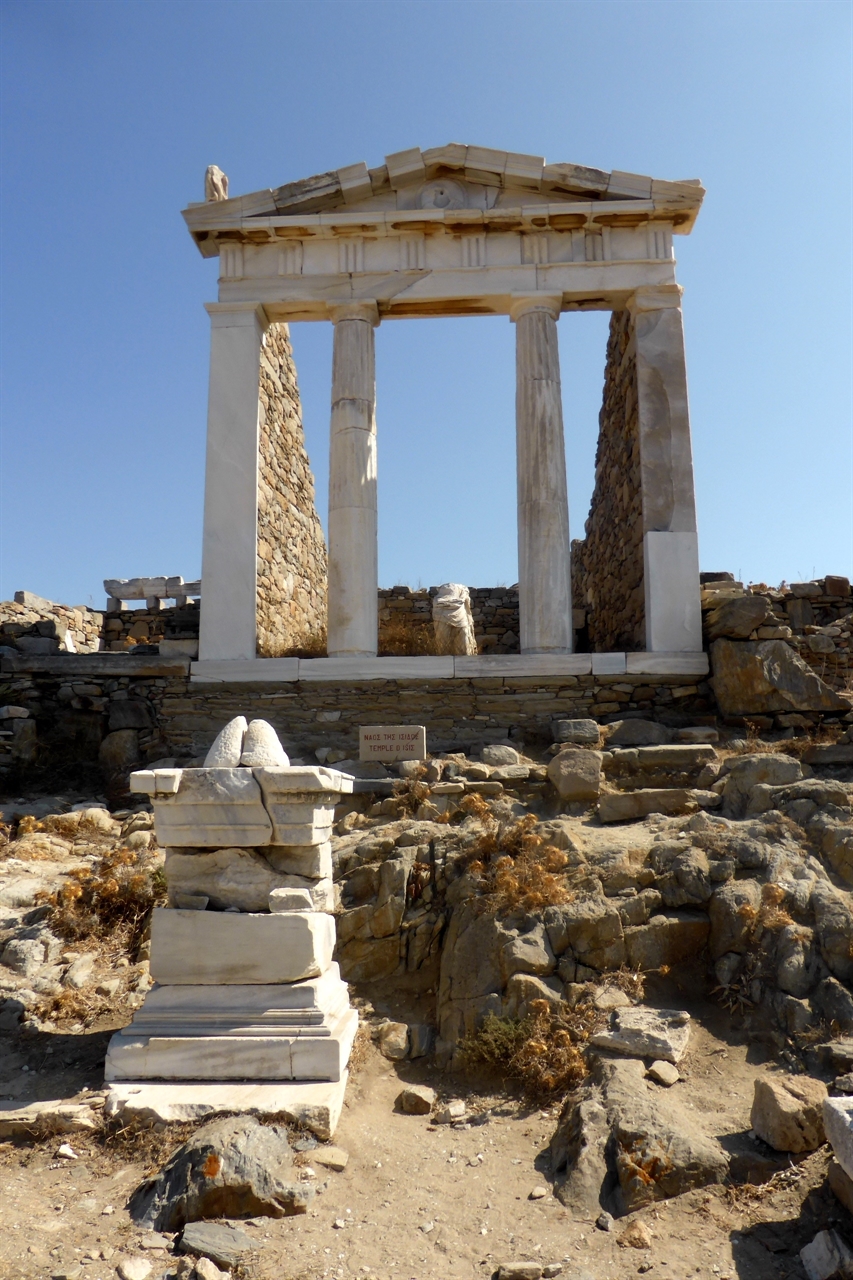
Leaving Delos
That was the end of my visit to Delos. As a final quirky difference, it is interesting to note that in ancient times due to the island being considered sacred, no one was allowed to be born or to die on the island. Any woman nearing childbirth or person approaching death was transported off the island. Today the island has preserved this tradition, simply by being the remains of an ancient city. Anyone needing medical attention still needs to leave this island!
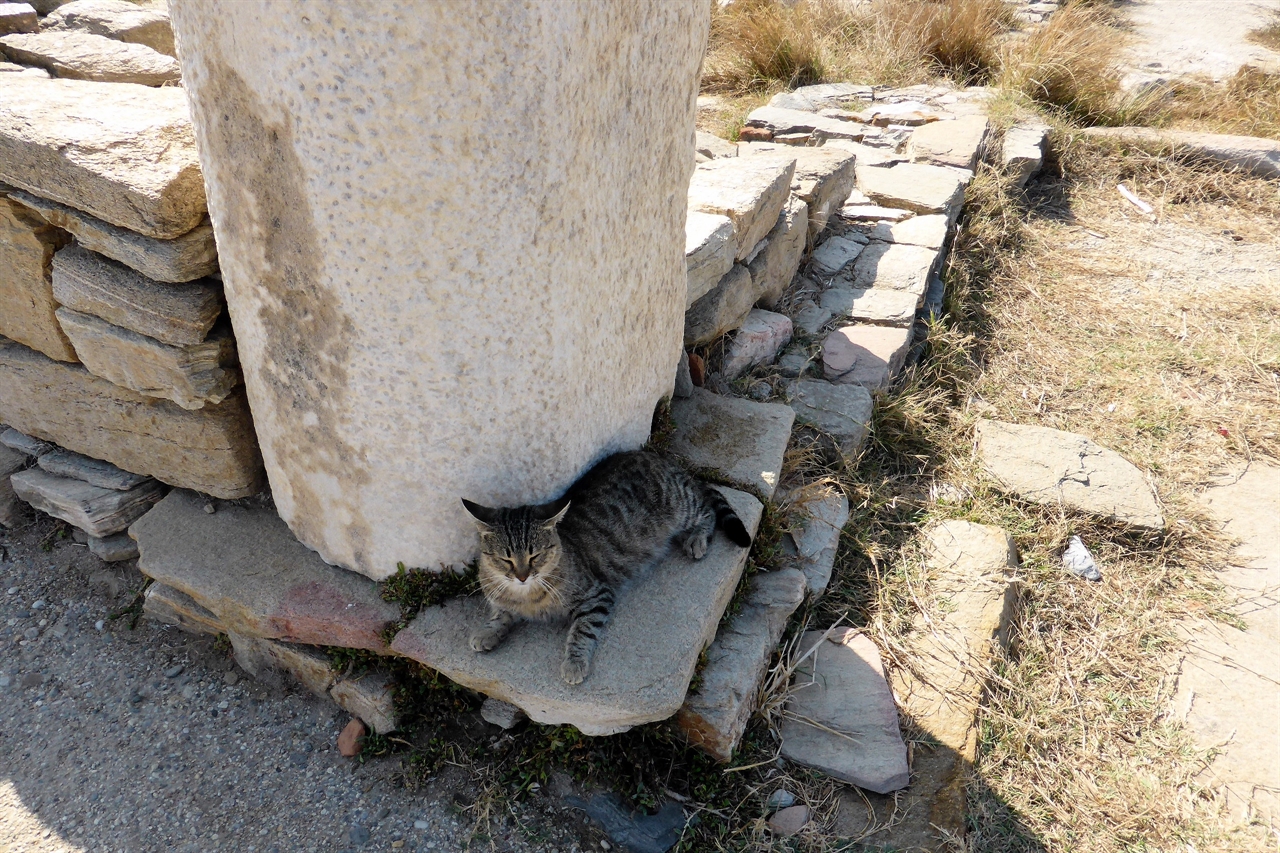
If you liked this post, please share the link with your friends, or pin the article on Pinterest. As always, I appreciate your support! Thank you for reading.
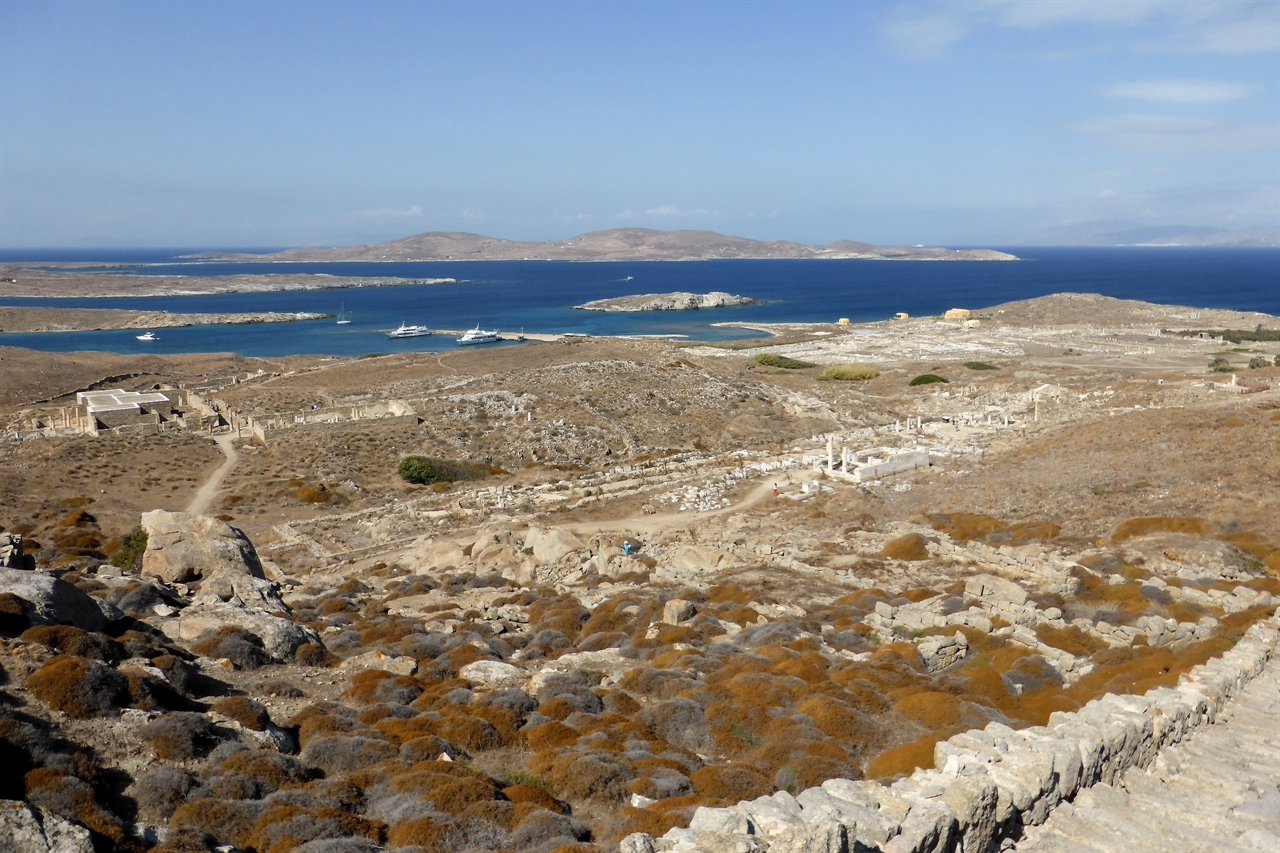
wonderful😊
Thank you Flavia, glad you enjoyed this!
😊
You have just help me add a destination to my bucket list. What an amazing place to explore. I love the mosaic floors and old structures. Stunning! You must have such a wonderful time.
Nancy | http://myeverydaychallenges.com/
Thanks Nancy – you’ve just made my day! I’m so happy that you’re inspired to go and see Delos! I did have a really fun time on Delos, even though it was a bit on the rushed side. I’m always amazed by those mosaic floors – just beautiful. It was an elegant city.